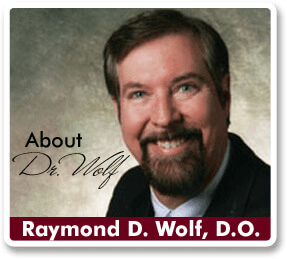Vein Therapy FAQ
Varicose/Spider Veins – Questions? Let’s Chat
What are my options for varicose vein treatment?
There are several options for varicose vein treatment. The options include:
- Endovenous laser ablation
- Medical phlebectomy
- Ultrasound guided sclerotherapy
- Visually guided sclerotherapy
- External laser
- Intense pulsed light
All of these techniques are as convenient as they are effective, they can be performed in a day, and most patients can resume their regular schedule the very next day without the need for intravenous medication.
What is endovenous laser ablation?
A laser fiber is inserted directly into the afflicted vein responsible for the unsightly, rope-like and painful varicose veins. The laser heats the vein lining and is withdrawn slowly, collapsing the vein. This solidifies the once open vein, and over time, the vein will shrink and eventually disappear. This procedure is used for larger veins and takes 30 minutes or less to perform.
What is medical phlebectomy?
A phlebectomy procedure removes varicose veins through a number of very small punctures (micro incisions) in the skin. The treated area is lit using a small thin tube with a light attached to one end. This tube is placed under the afflicted vein, allowing the doctor to see the varicose veins through the skin’s surface. Anesthesia is injected to numb the area around the vein. Micro incisions are made in the area and the doctor pulls the vein from the skin using a hook.
The skin is closed with a Steri-Strip, a thin adhesive strips similar to a band-aid, which can be used to close the small incisions, instead of stitches. A special dressing is applied over the area and the patient can go home the same day; he or she can even drive themselves.
What is ultrasound guided sclerotherapy?
Ultrasound guided sclerotherapy is a more recent procedure used treat larger varicose veins. The ultrasound helps to pinpoint the true source for the unsightly bulging vein. Once the afflicted vein is located, chemicals are placed inside the vein in order to irritate the cell walls within the vein. This irritation collapses the problem vein; once collapsed the vein will eventually fade. The procedure is followed by a compression hose fitting and the patient is able to walk (ambulate) immediately.
What is visually guided sclerotherapy?
Visually guided sclerotherapy is the treatment of superficial, visible veins on the skin. The physician will aspirate (remove by suction) the blood and will then inject chemical sclerosants (fluids) into the veins. These fluids will seal the walls of the vein; eventually this vein will turn into scar tissue and will be re-absorbed back into the body. Both spider veins and varicose veins will greatly benefit from this treatment.
What are laser and intense light treatments?
These treatments are usually most effective when performed on telangiectasias, small veins. The skin surrounding the veins is anesthetized using a topical agent. The laser or intense light heats is applied, which damage the walls of the vein and eventually, the body absorbs the vein.
Why do I have to wear compression hose?
Compression hose is a functional clothing accessory that helps to ease the symptoms of varicose veins by helping to reverse venous reflux. While the hose does not cure the root cause of abnormal vein valve function, nor does it stop the condition from worsening, it does provide relief of the symptoms and are recommended to patient to keep them comfortable and to enhance the overall treatment.
Will the veins disappear on their own?
Unfortunately, varicose veins don’t improve with time – if left untreated they only get worse. Varicose veins have abnormally functioning vales that direct blood flow to the legs instead of the heart. This reverse blood flow creates an increase in pressure and damages additional valves. When the affected veins are isolated and removed, blood begins to move in the correct direction and painful and uncomfortable symptoms lessen or disappear altogether.
What happens if I need bypass surgery?
During bypass surgery blocked coronary arteries are circumvented using another healthy blood vessel as a bridge, to carry blood around the obstruction. An example of a commonly healthy blood vessel is the saphenous vein – the large vein of the leg and thigh region. Our removal of abnormal veins, such as varicose veins, helps to keep this vein intact while removing the damaged, weakened varicose vein. Our ultrasound analysis allows us to expertly pinpoint the abnormal vein, which enables us to treat the problem vein while keeping the normal vein intact – preventing any further breakdown.
Are the treatments painful?
No, we are proud to say that our treatments are not painful at all. We treat the area with tumescent anesthesia, the same anesthesia we use for our outpatient liposuction services. Once the anesthesia is injected, you won’t experience any pain. The only discomfort you may experience will be be post- surgery soreness.
Will these treatments help a leg ulcer?
The vast majority of leg ulcers (70%) are due to abnormal vein function. Phlebology treats problem of reverse blood flow (reflux) – which is the result of perforator vein incompetence at the source. We’ve helped many patients who have undergone other methods to improve their veins, such as hyperbaric oxygen treatment or topical applications attain solid results with proper vein treatment.






